SAPPHIRE
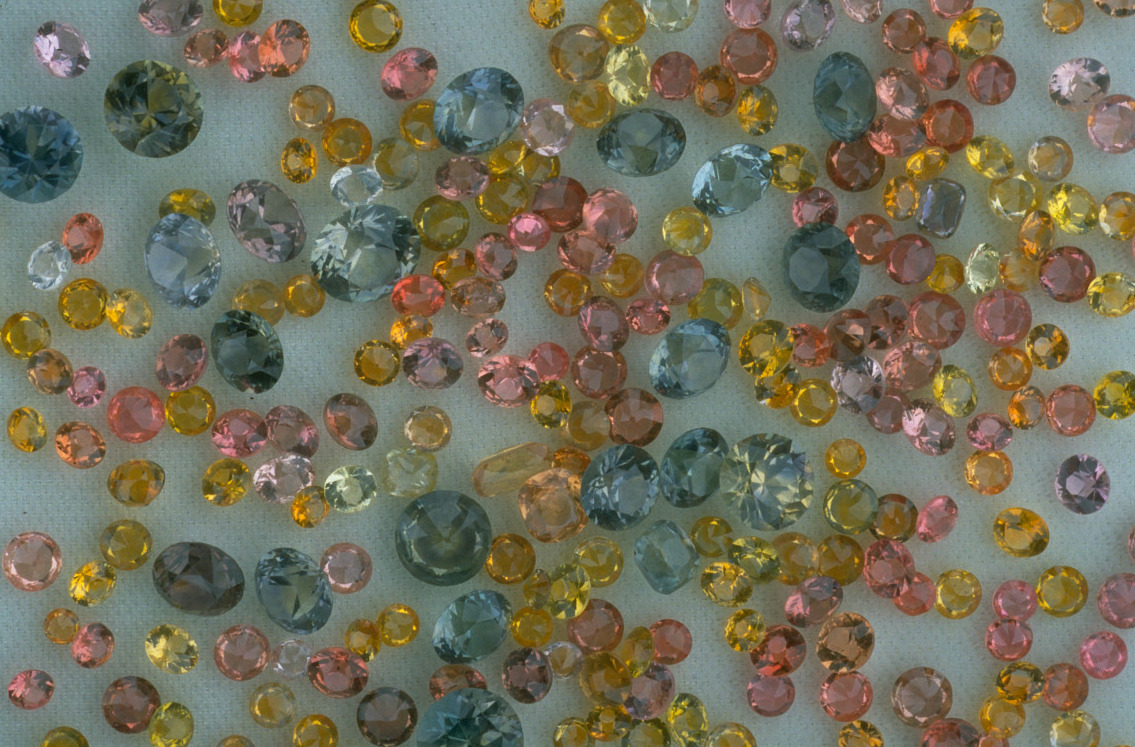
Sapphire gemstones from the Department of Mineral Sciences Collection at the Smithsonian Museum.
The Facts
- The famous blue sapphire results from the bonding of titanium with iron within the conundrum crystal structure.
- Iron can produce yellow or green gems.
- Large amounts of chromium can produce the red of ruby, and the near-red of pink sapphire in lesser quantities.
- A mixture of chromium and iron will create orange gems, as well as the rare and highly sought after ‘padparadscha’ sapphire, an unusual but gorgeous combination of pastel pink and orange.
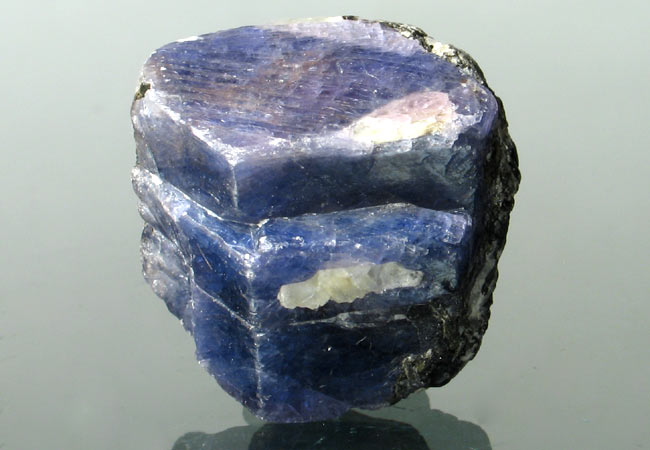
Blue sapphire mined in Madagascar.
Sapphires are found in various parts of the world, with notable deposits in countries such as Sri Lanka, Myanmar (Burma), Kashmir, Madagascar, and Australia. The gemstone has been treasured throughout history, and its geographic origins often play a role in its value. For instance, Kashmir sapphires are famed for their deep, velvety blue hue, often described as ‘blue velvet’ due to their distinctive mysterious and almost sleepy appearance. Other locations, like Madagascar, Burma and Sri Lanka, are known for producing large quantities of sapphires, with Madagascar leading the world sapphire production as of 2007, specifically its deposits in and around the town of Ilakaka.
Sapphires can be formed in both metamorphic and magmatic geological environments. While rubies and sapphires are often found in the same regions, they are formed under different conditions. In Myanmar’s Mogok Stone Tract, for example, rubies form in marble, while sapphires come from granitic pegmatites. Sapphires can also undergo heat treatment—a common practice that enhances their color and clarity by altering the mineral structure at high temperatures, with evidence to suggest that this is a practice that dates back to Roman times. The gemstones are heated in furnaces at temperatures between 800 and 1,800 °C for several hours, or even weeks at a time, after which they become bluer in colour and lose some of their rutile inclusions.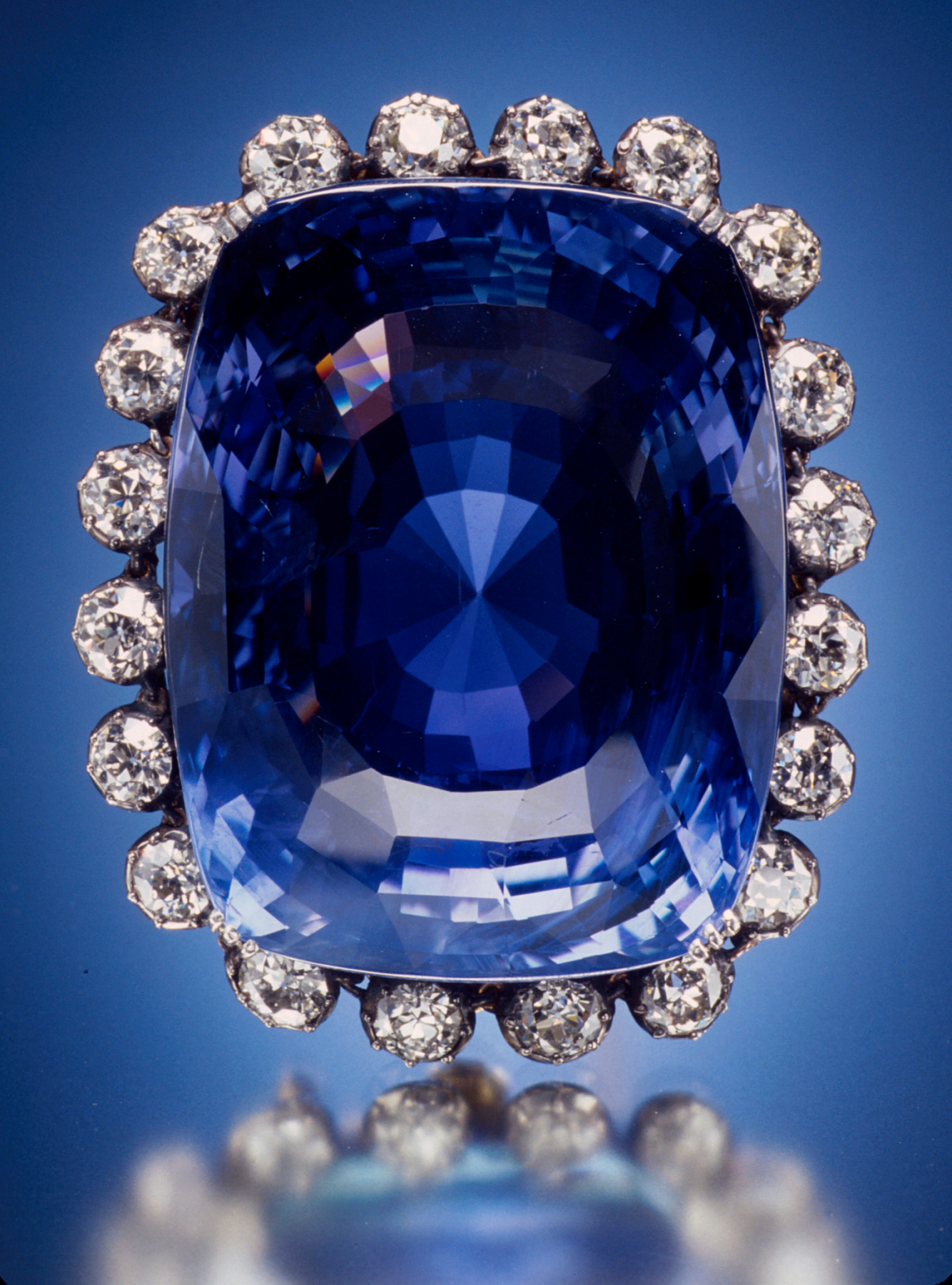
The Logan Sapphire, on display in the Smithsonian Museum.
Blue sapphires, in particular, are graded based on their hue, saturation, and tonal purity, with the most valuable stones displaying a vivid, pure blue. The 423-carat Logan Sapphire, housed in the Smithsonian National Museum of Natural History in Washington, D.C., is the heaviest mounted gemstone in the National Gem Collection and one of the largest faceted blue sapphires ever documented. Originating from Sri Lanka, likely the Ratnapura region, the Logan Sapphire has a rich blue colour with violet overtones, cut into a rectangular cushion shape, designed more to highlight colour and clarity than to maximise brilliance.
Some sapphires exhibit a unique optical phenomenon called asterism, where intersecting needle-like inclusions creates the appearance of a six-rayed star on the stone's surface when viewed under a single overhead light source. Known as star sapphires, the value of these stones is not based solely on its weight, but also on the colour, visibility, and intensity of the asterism, with the colour of the stone having a greater impact on the value than the visibility of the star. The Star of Adam, a blue star sapphire weighing over 1,400 carats and originating from southern Sri Lanka, is the largest known example of this phenomenon.
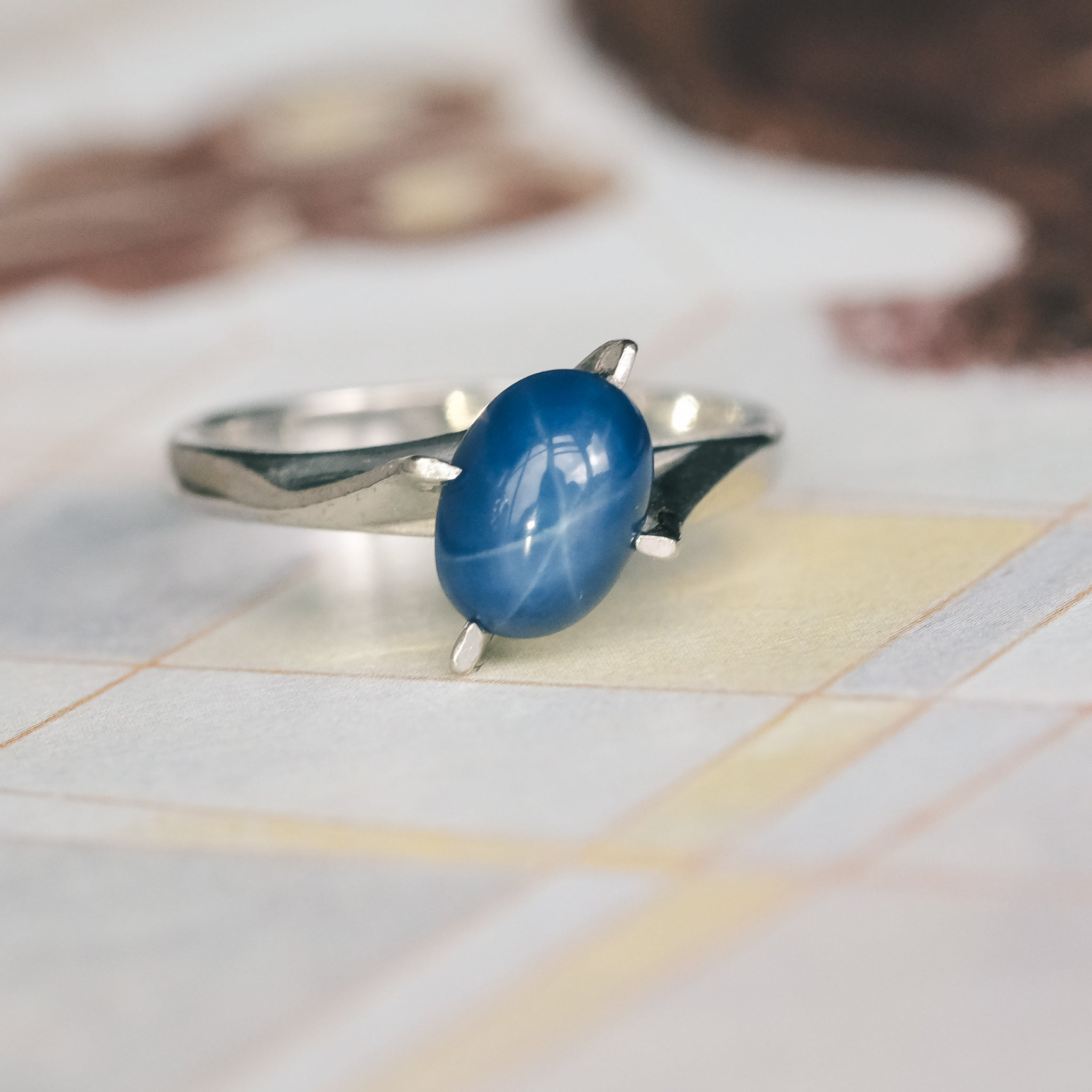
Vintage Star Sapphire Ring, Available Now.
The Legend
One of the most enduring legends surrounding sapphire is its association with the heavens. The ancient Persians believed that the blue sky was the reflection of the earth resting upon a giant sapphire. This idea elevated sapphire to the status of a celestial gem, linking it with the divine and the cosmic order. In ancient Greece, sapphire was believed to hold the power of the god Apollo, and petitioners would wear it when consulting oracles, believing it would allow them to receive divine guidance.
Throughout history, sapphire has been a gemstone of kings, queens, and religious leaders. Royalty adorned themselves with sapphire jewelry not only for its beauty but also for its supposed ability to protect them from envy, harm, and misfortune. During the Middle Ages, clergy members wore sapphires to symbolize Heaven, and rulers used the stone to assert their divine right to power. One of the most famous legends is that of Charlemagne, one of the most powerful emperors who ever lived, who was buried with a large pendant featuring a 190 carat pale blue sapphire, symbolising his authority and connection to the divine.
The gemstone’s connection to royalty is perhaps most famously seen within the British royal family. Queen Victoria was gifted a sapphire and diamond coronet by her beloved Prince Albert, initially as a symbol of the love that the couple shared but later coming to represent the grief that settled over the Queen in the years after Albert’s premature death in 1861. Queen Elizabeth II was also gifted sapphires, this time a sapphire and diamond necklace and earrings from her father as a wedding present in 1947, which became a staple statement set throughout her reign. And more recently we have seen the engagement ring worn by Princess Diana and later given by her son to Kate Middleton. This iconic ring, featuring a 12-carat oval Sri Lankan sapphire surrounded by 14 brilliant cut diamonds, has now become a royal heirloom in its own right, and serves as yet another example of the sapphire as a symbol of love, loss, and legacy within the British royal family.
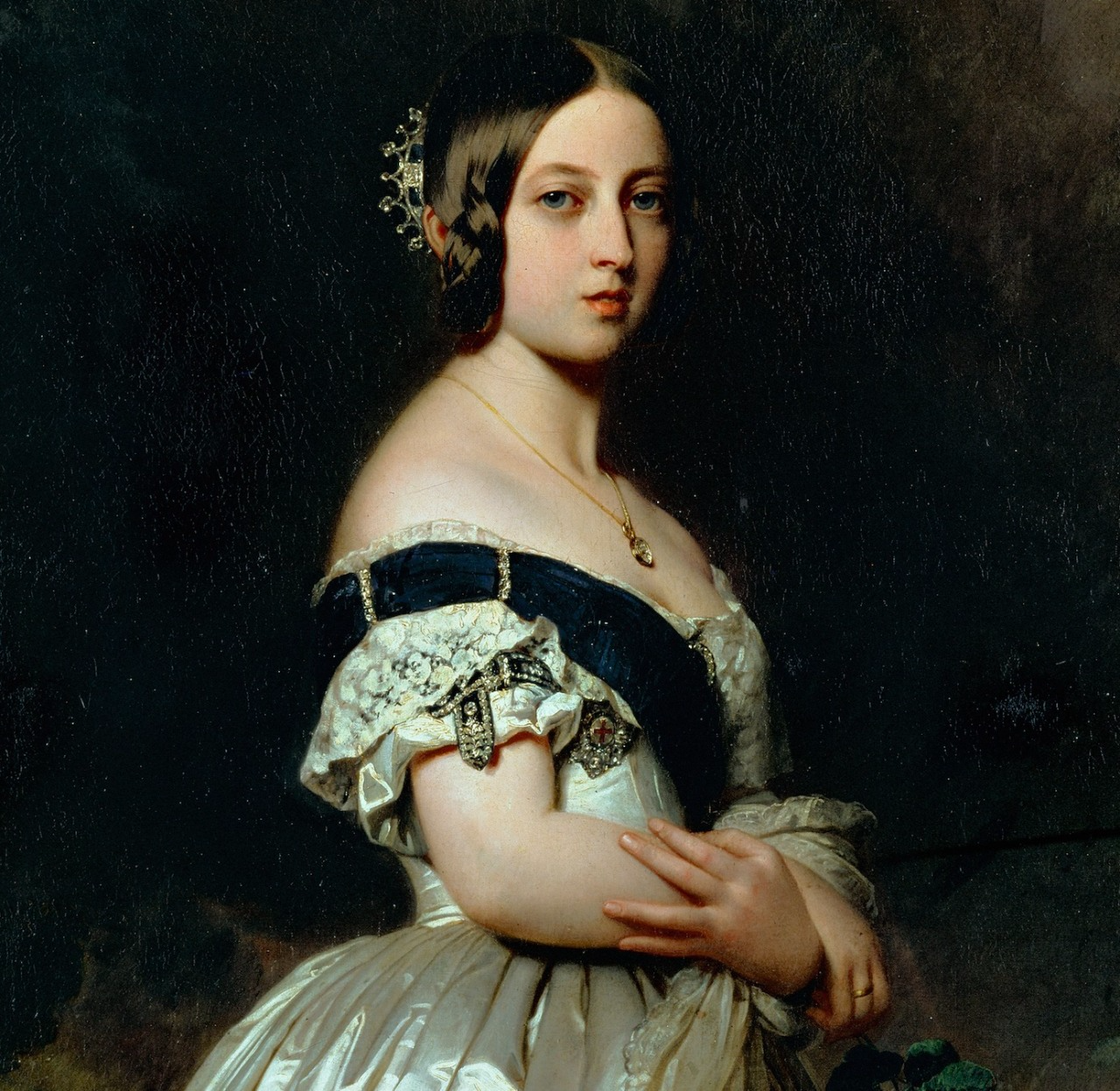
Queen Victoria in her Diamond & Sapphire Coronet.
For centuries, sapphire has been believed to possess healing properties. In ancient times, people believed that sapphire could protect its wearer from poison and illness. Some even thought that the gemstone’s powers could enhance one’s strength and vitality. In the Middle Ages, sapphire was particularly associated with the healing of eye-related ailments, and it was said to help the wearer achieve clarity of vision—both literally and metaphorically. More than just a physical healing stone, sapphire was also thought to ease mental and emotional strain. It has been regarded as a stone of wisdom, peace, and balance, calming the mind and relieving stress, anxiety or depression. Those seeking emotional stability or spiritual growth often turned to sapphire for guidance, believing it could enhance inner strength and emotional clarity.
Sapphire's influence extends into many aspects of culture and religion. The Greeks wore sapphire to gain favour from the gods, while early Christians regarded the star sapphire as the "Stone of Destiny," believing that the star’s three crossbars symbolised faith, hope, and divine will. In Jewish tradition, the High Priest’s breastplate was adorned with various precious stones, including sapphire, symbolising spiritual clarity and wisdom. The blue colour of sapphire has long been associated with status and virtue in Western culture, with roots in culture, art, and religious iconography. The Virgin Mary, for example, is almost always depicted wearing blue garments to denote her holiness, divine favour, and connection to heaven. And it is not just the blue sapphire which holds symbolic meaning, but also the pink sapphire which is said to bring wisdom to love, yellow which fosters power and prosperity, green to strengthen inner vision and integrity, and white sapphire which brings clarity, purity and purpose.
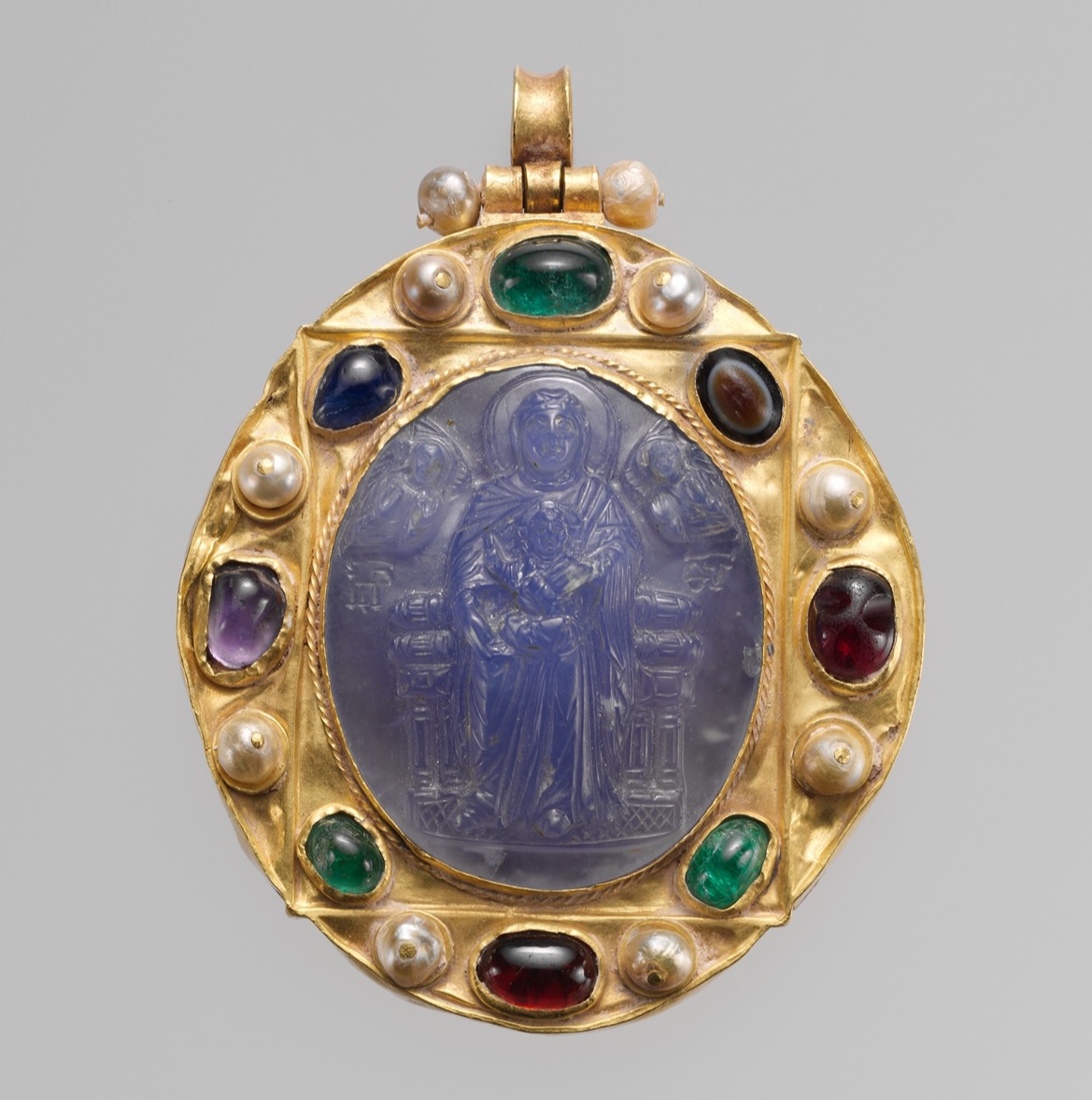
Cameo pendant depicting the throned Virgin and Child, circa 12th century.
In modern times, sapphire continues to carry significant meaning. For those born in September, sapphire is the birthstone said to bring order, clarity, and protection. As a symbol of loyalty and commitment, it is often chosen for engagement rings for those seeking a lasting bond. For centuries, sapphire has been linked with the themes of divine power, eternal love, and natural wonderment. A gemstone admired for its vivid colours, sapphire remains one of the most cherished gemstones with significance that endures in both historical lore and contemporary symbolism.
The Specifics
Composition: Aluminium Oxide (Al2O3)
Crystal system: Trigonal
Lustre: Vitreous
Colour: All colours except red
Hardness: 9
Refractive Index (RI): 1.76 to 1.78
Transparency: Transparent to opaque
Inclusions: Uneven colour zoning, silk inclusions, fingerprint inclusions
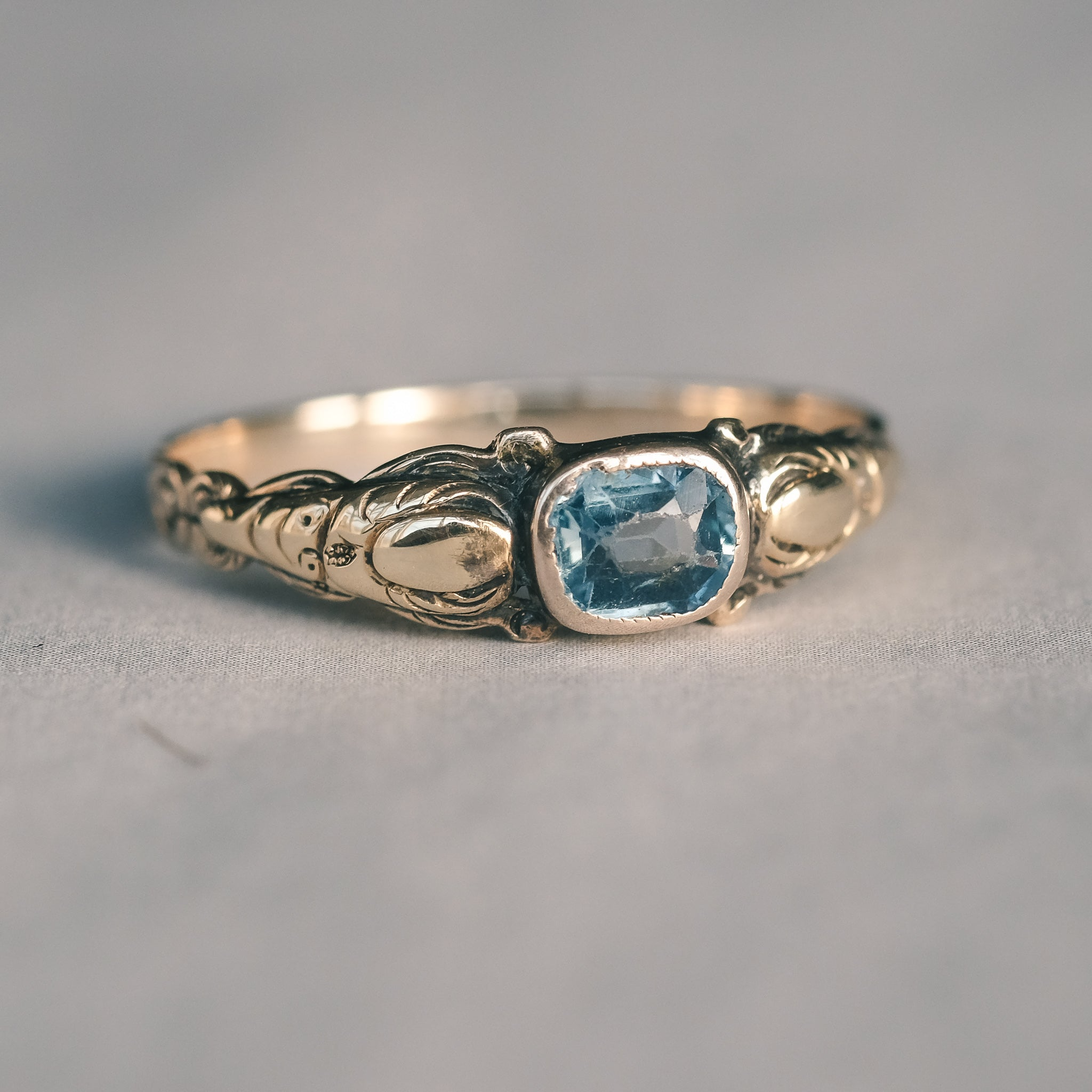
Georgian Sapphire Ring, Lost Owl Archive.

